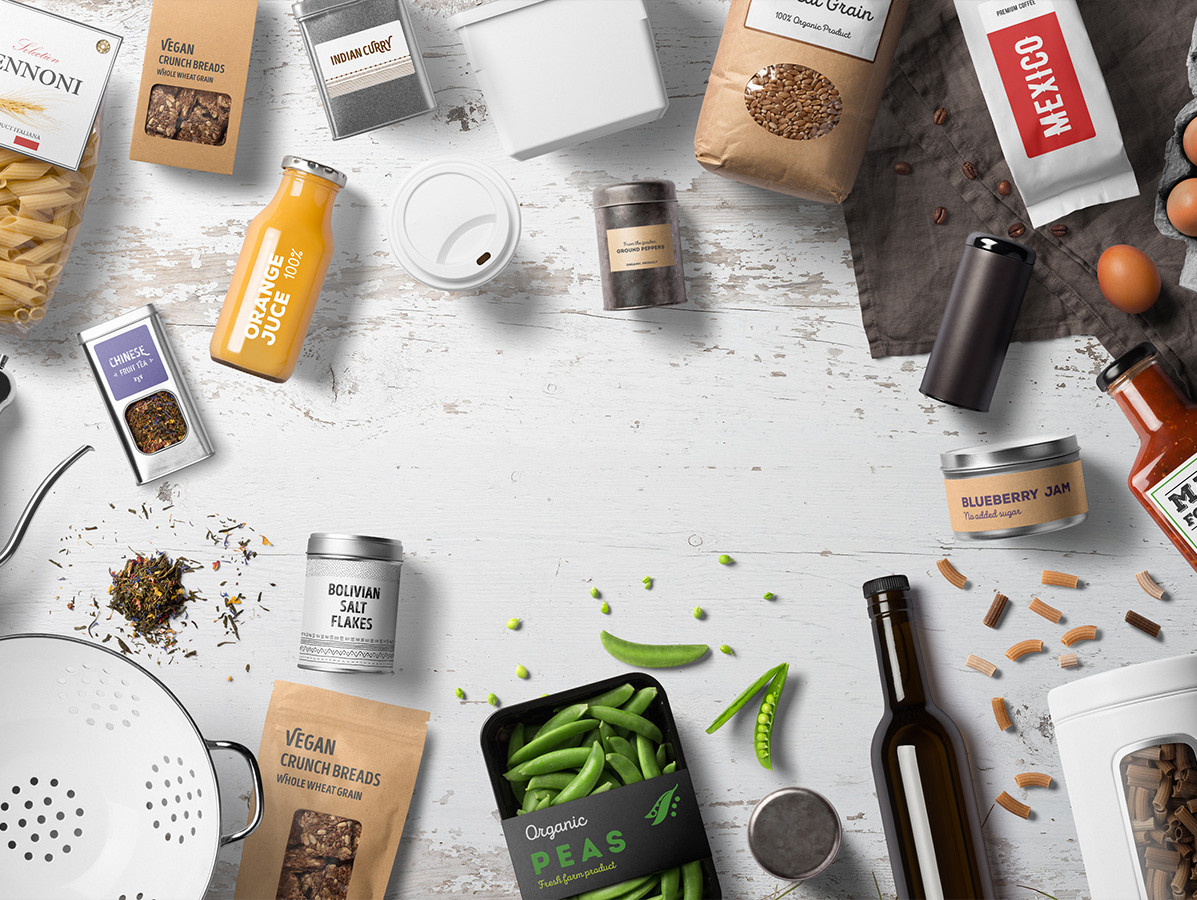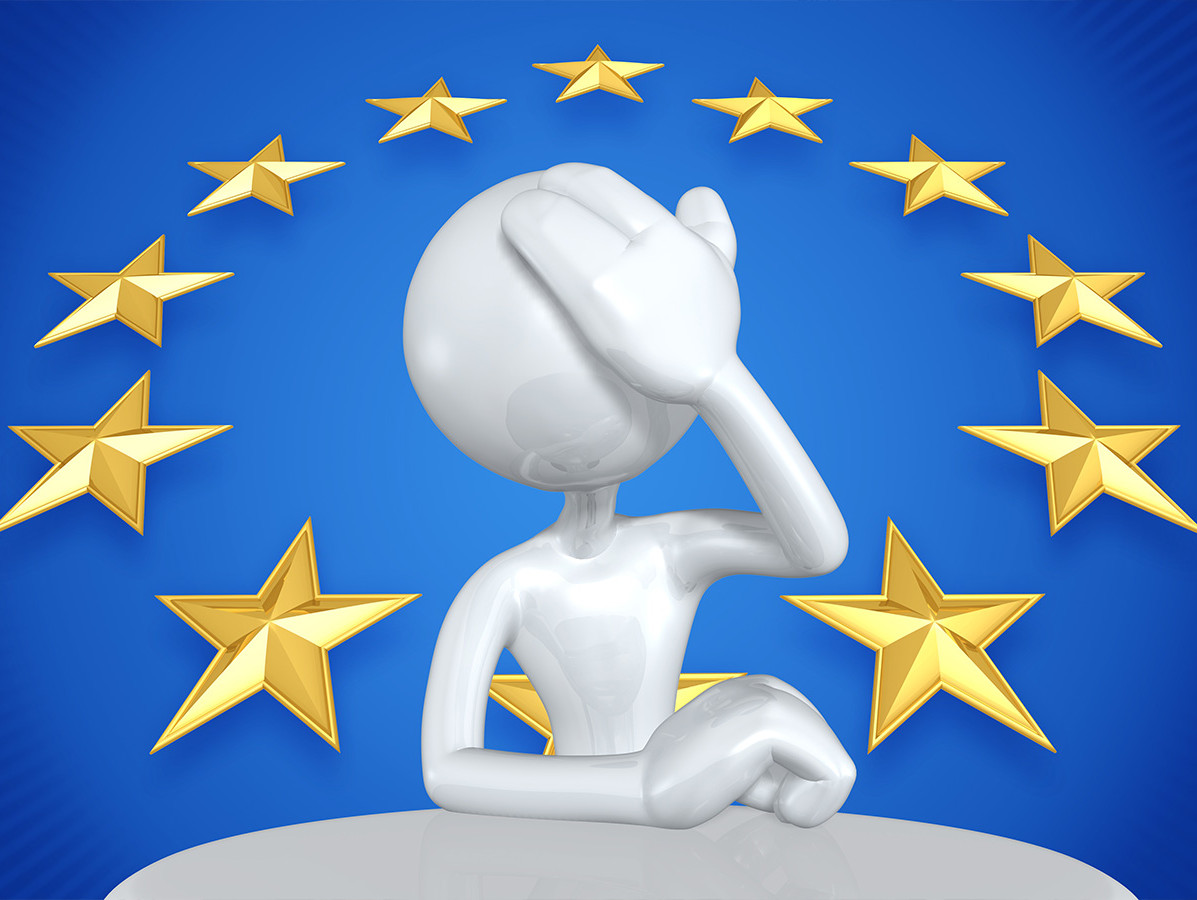
The European Commission is 'through with it': the EU's packaging waste policy has failed. That is why the EU is intervening with new legislation. Which is SO detailed that it is going to have a lot of impact on the food industry. What exactly does it involve? And what is the best strategy: wait and see or take the lead?
Since 1992, the European Union has been striving to reduce the use of packaging. Indeed, analyses show that almost all individual packaging has become less heavy over time: from wine bottles to aluminium cans. Yet the overall use of packaging materials has increased, as we use more packaging per person per year. This is related to the decrease in the average size of households, the higher share of consumption on-the-go and the increase in e-commerce. In particular, the use of cardboard and plastic as packaging materials is increasing, while the amount of glass and metal remains roughly stable.
The focus of the packaging industry in recent years has been on recycling. For plastics, this has been most challenging. From 2008, a collection, sorting and recycling infrastructure was set up in the Netherlands and now we can recycle roughly 50% of all plastic packaging. Several companies started to redesign their plastic packaging for recycling. Millions of packages in tens of thousands of companies need to be re-evaluated and often modified. This creates a fragmented picture. A few companies are ready. Most are still busy and often encounter dilemmas. Finally, there is a small group of companies that are letting things run their course. The dilemmas differ greatly. Some are technical in nature: packaging that is too small, packaging machines not suitable for the alternative material, strong shelf-life reduction, etc. Others clash with marketing policy: the desire for transparent material, use of colour, label size, etc. or have a more organisational character, such as production in Asia and unwillingness to change packaging there for the Dutch market only.
To actually achieve more circular use of materials, it is not only about whether the packaging is recyclable and recycled, but also about where the plastic comes from. And that is exactly where the opportunities to reduce carbon emissions lie. Some companies have climate action plans and targets to reduce the carbon footprints of their packages. They would like either food-grade (food-safe) recycled plastic or renewable plastic to achieve that goal. Approved food-grade recycled PET is now available. Food-grade recycled PE and PP, sadly, are not available yet. The latter has to do with the strict interpretation of regulations in this area; the European Food Safety Agency (EFSA) works with a very conservative protocol for assessing the food safety of recycled plastic. This causes companies to look for biobased solutions. There are biobased alternatives for PE, but hardly any for PP. Companies that put PP food packaging on the market and want to reduce their footprint thus find themselves at square one. An opportunity might be to start replacing PP with biobased PLA on a sector-wide basis, for instance, and at the same time adapt the sorting and recycling companies accordingly. This would have several advantages. First, a substantial reduction in CO2 emissions, less dependence on fossil oil and a PLA waste stream that can be food-grade recycled via de-polymerisation. Then again, such a big step requires agreement from all chain partners, and that has yet to happen.
At the same time, the costs of the whole waste and recycling system are rising, which translates into rising fees at the Extended producer responsibility (EPR) scheme for putting plastic packaging on the market. Part of the packaging industry can increase the price of its products and pass on the cost increase to the consumer. Another part can't. They are trapped. In short, we have taken steps towards a recycling economy for plastics in the Netherlands, but it is not a circular economy, yet. Moreover, the system costs are substantial. In order to force breakthroughs, more pressure, vision and cooperation are needed.

©Scott Maxwell LuMaxArt/shutterstock.com
At the European level, the situation is considerably more problematic. A recent OECD report shows that the growth in plastic recycling capacity in Europe can barely keep up with the growth in waste production. Nor is there any reversal yet in the pollution of land and sea with plastic waste. Finally, we are not moving away from crude oil, so CO2 emissions remain high.
The European Commission is, in Diederik Samson's words, "done with it". The policy officer in charge, Ms Desgreès de Loû expressed herself in similar terms: "The EU's packaging waste policy has failed". Therefore, the EU is going to intervene with new legislation, which is so detailed that it is going to have a lot of impact on the industry. The 2019 Single Use Plastics (SUP) directive was the first step. The revision of the Packaging and Packaging Waste Regulation (PPWR) will be the second. For the EU, the SUP Directive has been a huge success. The plastic items most commonly found on European beaches are now banned and will soon no longer be a problem. Moreover, the European commission is pleased with the public discussion and awareness raised as a result of the SUP Directive.
The SUP Directive is now being translated into national legislation in the various member states and this is where the first -notable- differences are visible. Preliminary 'guidance' documents show that the same food packaging may be considered SUP in one country but not in another. Similarly, the same plastic container may be sold to two different companies and used as SUP in one and no-SUP in the other. Do you still understand? It keeps consultants and lawyers busy.
Meanwhile, various 'solutions' are being offered, such as flexible plastic packaging, metal packaging, and carton packaging in which the coating is so thin that it is barely detectable. Of which the first two are indeed not SUPs according to the law. Carton packaging with very thin coatings is formally a SUP, but that is very difficult to prove. Furthermore, all three are not necessarily better for the environment. And wasn't that the purpose of the SUP Directive?
Anyway, Brussels has got a taste for it. Because of the SUP Directive, endless discussions have been set in motion, consumer products are visibly changing, social debate is taking place and awareness is emerging, according to the commission. Late last year, the sequel was revealed: the draft text of the new PPWR. Everyone will embrace its goals; less CO2 emissions, less plastic pollution and less dependence on crude oil. The question, however, is whether these higher goals will be met with the policies now being proposed. For the sake of readability, we only mention a few targets:
A few things stand out to us in these new targets. First, the committee now prescribes that some specific products must be partially marketed in reusable packaging. Now, reuse systems can work just fine; the Dutch beer brewers' BNR bottle is a good example. Beverage companies that are forced to keep a certain percentage of reusable bottles in circulation should think carefully about how to choose just those bottles or brands that will allow them to meet the target without unwanted side effects. Studies show that for most reuse systems, at least 10 rotations need to be achieved to produce fewer CO2 emissions than the corresponding single-use packaging. This corresponds to a return rate of at least 90%, which in practice can only be achieved with a deposit refund system. Furthermore, literature shows that the back-and-forth transport distance should not exceed around 150 km. This therefore means that this can only be achieved with local beverages and not with imported products such as Spanish wine or Scotch whisky. The target of 25% reuse for beverage bottles by 2040 will therefore in practice limit the options for the industry as a whole.
©Kanittha Boon/shutterstock.com
By far the most remarkable thing in the new regulations, are the high recycled content (use of recycled plastic in new packaging) targets for the various forms of packaging. Because EFSA now uses a triple-conservative assessment methodology for feedstock -recycling-process combinations and the European Commission appears to be adopting EFSA opinions without question, it is almost solely possible to use recycled PET in new food packaging; other materials do not meet the strict requirements. The recently revised Directive 1616/2022 does not change anything about this. Given the high proportion of food packaging (~two-thirds of plastic packaging), these high targets mean that almost all non-food plastic packaging must contain high levels of recycled plastic and recycling of PET bottles to food-grade PET must be maximised. This alone will be a complicated puzzle and it is going to be tight. But that's not all. Because at the same time some of the PET bottles that are well-recyclable into food-grade material have to become reusable, it becomes almost impossible to implement with current technology and regulations. So the combination of high recycled content and high reuse, is very challenging.
The double standard around food safety is striking here. For recycled plastic, there is a comprehensive directive (EU 1616/2022) and a very conservative EFSA assessment protocol. For reusable bottles, there is none; for those, it is the bottler's responsibility of care. It is known from years of experience that glass bottles can be safely cleaned with hot alkaline washing liquids. With plastics like PET, however, the washing temperature and alkalinity must be reduced to avoid damaging the plastic too much. If a reusable PET bottle is abused by consumers (by putting turpentine in it, for example), this cleaning procedure will not be able to remove all the unwanted substances. The food safety risk now lies with the bottler. This is fundamentally different from mechanical recycling. Here, the single-use PET bottle is milled, the milled good is first washed with a highly alkaline solution, then treated at high temperatures under vacuum before finally being blown back into a bottle. That EFSA-guaranteed procedure does allow all contaminants to be sufficiently removed from the bottles. So why does the European Commission demand reuse for beverage bottles? Circularity in its most visible form (reuse) seems to have become the main political goal.
If this PPWR continues unabated, the role of the EPR scheme is also going to change. Not only will the bureaucracy then be greatly expanded to start measuring and reporting on all sub-targets. Moreover, to start complying with this regulation, someone will have to orchestrate the entire cycle. So, the freedom of recycling companies to sell their recycled plastic to the highest bidder will have to end, and packaging companies will no longer be allowed to decide for themselves whether to use recycled plastics or not. This seems like a recipe for endless organisational and legal disputes.
Attack is the best defence. It is calm before the storm. Now that this draft PPWR is circulating for consultation in the member states, it is important for the packaging industry focus on the main goals: reducing greenhouse gas emissions and preventing further planetary pollution. The food industry will therefore have to take the lead. To do so, it must start using renewable raw materials itself. The sorting and recycling system will have to be adapted to produce food-grade recycled plastic. Waiting and letting it run its course will eventually result in a much more expensive and complicated system.
Main photo: ©Mockup Cloud/shutterstock.com
Source: Vakblad Voedingsindustrie 2023